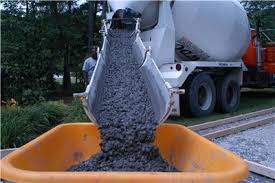.jpg) MEERA MURUGESAN
MEERA MURUGESAN
Before buying any property, seek professional consultation,
advises MEERA MURUGESAN
TWO years ago, Anita and Jeff came across an advertisement.
A double-storey terrace house was for sale.
It was in a location they had planned to live in and the
price was within their budget.
They had found their dream home, or so they thought.
Being first-time house buyers, the couple were eager to land the property.
A month after moving in, Jeff and Anita realised they had made a mistake.
The house had been advertised as “move-in condition” but the couple
soon found themselves forking out huge sums for repairs.
“We had endless internal plumbing problems and had to redo
wiring for the entire house. We are paying so much for repairs
because something gets broken all the time,” Anita says.
In their eagerness to secure the property, they failed to
notice the hidden costs that would incur from the purchase.
“The previous owner had painted the place and patched things up
to make it look presentable so we failed to notice just how bad
the condition of the place really was,” says Jeff.
For Farah, a single executive from Petaling Jaya, her dream of
owning a condominium has ended in frustration.
She signed up to purchase a yet-to-be built condominium
from a developer during a home owner’s campaign in 1999.
She liked the location of the condominium, the facilities promised
and the fact that the developer seemed reputable.
She was confident of getting ownership of the property by 2002.
Chang advises buyers to appoint their own lawyers
Chang advises buyers to appoint their own lawyers
Unfortunately, for Farah, the developer went bankrupt in 2001
and till today, there has been no news of the project being revived.
“I paid close to RM10,000 to complete the initial transactions.
I’m still servicing my loan for the property but I don’t have a home,"
says a disgruntled Farah.
Despite frequent meetings with the developer’s representatives
and even lodging a complaint with authorities, Farah and other
affected house buyers are no closer to seeing their dream become a reality.
“The developer has been asking buyers to fork out more money
to revive the project. Yet they can’t give any assurance on when
the project will be completed," Farah says.
The cases above are classic examples of challenges faced by
house buyers in Malaysia and the common mistakes some
first-time purchasers make, says Chang Kim Loong, honorary
secretary-general of the National House Buyers Association (HBA).
Chang says for many people, the purchase of a house or
apartment is the most important financial decision of their lives.
Unfortunately, one wrong move can result in a lifetime of problems.

As in Anita and Jeff’s case, many people pay for a house
and discover defects later which cost them thousands to repair.
Chang explains that this would not have happened if the
couple had hired a professional, such as an independent
building inspector or quality consultant to report on the
condition of the house and check for permitted renovations
against shoddy renovations before they made the purchase.
In fact, the report would have given them additional
room for negotiation with the seller.
In America and Canada, home inspections are standard
practice in the purchasing process.
Home inspectors conduct inspections of newly-built or
previously owned homes.
Another mistake that many house buyers make is failing
to appoint their own lawyer before starting any transaction
with the present owner of the property.
“The first rule of conveyancing is that the buyer must engage
his own lawyer and consult a lawyer right from the start, and
not after you have paid the deposit,” Chang says. In most cases,
a lawyer would be able to complete the transaction.
However, lawyers with a focused real estate practice may
prove a better tool if the buyer is unsure of what to do or
if there are complications in the purchase agreement or mortgage.
“While you may think you cannot afford the services of your
own lawyer, consider whether you can afford not to,” cautions Chang.
A lawyer ensures that his client’s rights and interests are
protected and that his client is aware of the rights, risk and
responsibilities before signing an agreement.
They also ensure that negotiations lead to a fair agreement
binding each party to the contract with no uncertainties.
Chang says a lawyer should not be representing both
parties in the sale. If, for example, the buyer decides to
use the seller’s lawyer, when disputes happen, that lawyer
is unlikely to represent him against his client.
When purchasing a home from a developer, many
house buyers are also easily taken in by phrases such as
“free legal fees” in the developer’s brochure.
Chang says in these type of transactions, the developer
recommends a lawyer to the buyer to attend to the sale
contract and the developer pays the lawyer’s fees.
The buyer is given the impression that if he uses this
recommended lawyer, he gets things done free.
In reality, the recommended lawyer has a conflict of interest.
He or she is on the developer’s panel and would be receiving
work from current or future projects from the developer.
“How can such a lawyer act impartially for the buyer if problems
arise later such as delay in delivery of vacant possession or shoddy
workmanship? That’s why it’s always advisable for each party to
appoint its own lawyer,” says Chang.
When purchasing from a developer, many people also make
the mistake of assuming that a developer’s property is a
guaranteed investment or that the property will be completed
and delivered with vacant possession and a certificate of
completion and compliance. In fact, Chang says, consumers
must first understand the difference between a “Sell-Then-Build” (STB)
or “Build-Then-Sell” (BTS) variant property. Understanding the difference
could save a lot of heartache and financial loss.
STB means buyers will finance the building of the property in
progressive stages. It’s like buying a car and paying for it progressively.
“For example, when the car doors are fixed, 10 per cent is paid,
when the tyres are fixed, another 10 per cent is paid, when the
engine is installed, 15 per cent is paid and so on,” Chang says.
On the other hand, a BTS property means the developer
substantially finances the building of the property. It means buyers
will pay only after the whole “car” is completed and delivered in
good working order, with the authorities’ approval. Chang says
if the STB property is not completed, buyers are stuck in the sale
contract with huge amounts of money already paid to the developer.
But if the BTS property is not completed, buyers can opt to
break away from the contract with relatively smaller losses.
The HBA has always advocated the BTS concept as it
has been tried and tested successfully in neighbouring
countries and prevents buyers from being burdened with
problems such as shoddy workmanship or abandoned projects.
“It is a more straightforward and secure deal for buyers,” says
Chang. Auction properties also come across as very attractive
to many prospective buyers because of the lower pricing but
consumers may not realise the hidden dangers involved.
As the auction properties are sold on an “as is where is” basis,
this means new buyers assume responsibilities for
whatever encumbrances or outstanding debts on the property.
Chang says the property may also have many problems such
as broken water pipes or old electrical wiring that buyers
usually discover only after taking possession.
Buyers must bear in mind that there is little chance
of any physical inspection of the property prior to
purchase and delivery of vacant possession is also not
guaranteed.
http://panindiaproperties.blogspot.com/








.jpg)














